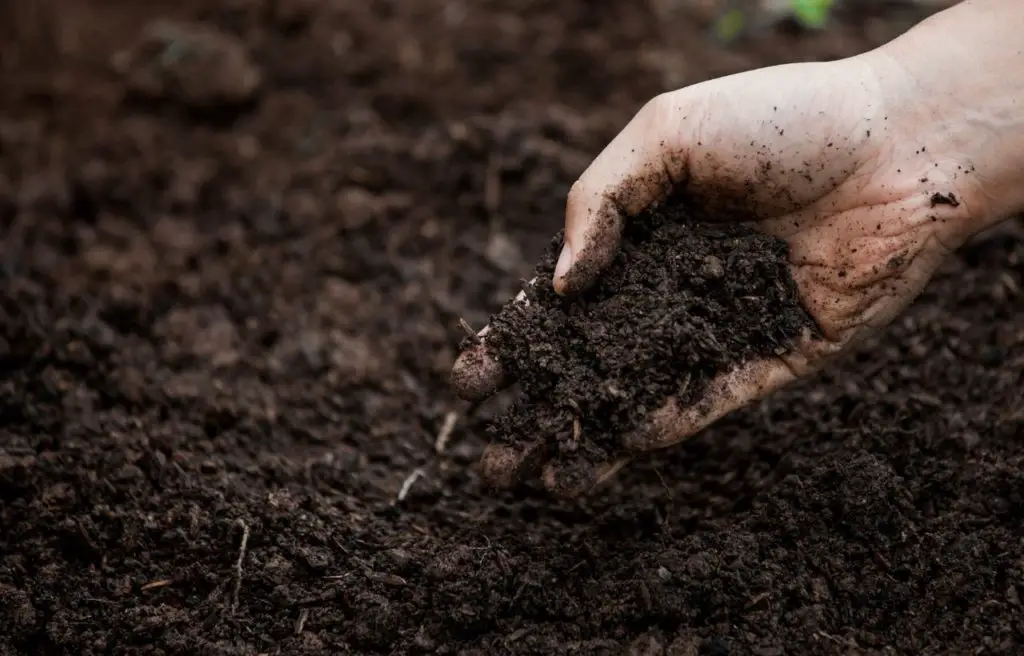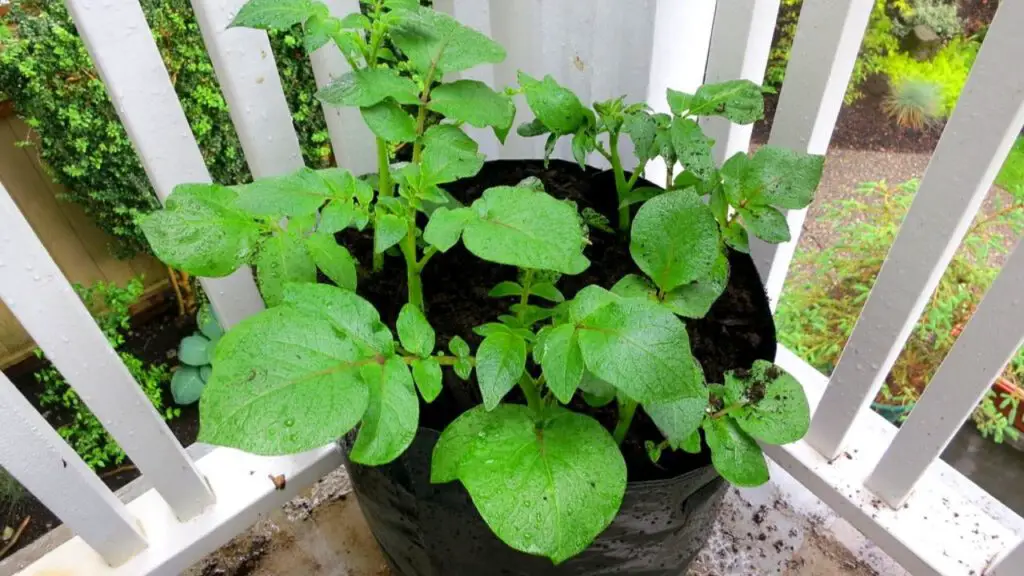Growing your own potatoes has so many benefits. You can grow vast varieties of potatoes in your greenhouse because not every variety is available in the supermarket. You can grow them organically without any chemical fertilizers or pesticides.
Plus you can use the greenhouse and grow lights to grow your organic potatoes for the whole year (whenever you want). Here are a few guides for you if you want to grow potatoes in winter too:
- An Ultimate Guide to the Best LED Grow Lights for Indoor Plants
- HOW TO BUILD A SMALL GREENHOUSE FOR VEGETABLES
All you need is some good-sized grow bags, soil, seed potatoes and you can grow a whole year supply of your organic potatoes in a small greenhouse. In this article, you will learn the best soil mixture, good kind of grow bags, best varieties of potatoes and important tips to take care of your potato plants in a greenhouse.
Best Bags And Containers
There are different types of bags are available in the market to grow potatoes in the greenhouse. Some of them are made of polythene and some are made of fabric. Fabric bags can be biodegradable or non-degradable.
I suggest you use non-degradable fabric bags, so you can reuse them in the next growing season. These bags are better than polythene bags because they contain numerous small holes in them for air transportation between roots and the environment.
So choose these fabric bags of good size or you can grow potatoes in buckets, or bigger pots (if you have them at home). Here are a few bags you can buy on Amazon.
Also Read: 10 Best DIY & Cheap Container Vegetable Gardening Ideas Anyone Can Use
Best Soil To Grow Potatoes In Bags
This step is very important. You cannot just go and fill your bags with the garden topsoil and expect to grow potatoes. Most topsoil has no or very little drainage (because of its compactness), has very less amount of nutrients for plants throughout the growing season.

You have to buy or make your own potting soil to grow in grow bags. Potting soil can provide nutrients to your plants for weeks. After a few weeks, you may have to provide extra nutrients using organic fertilizers.
Potting soil is very cheap if you buy it in bulk. You can buy cheap potting soil from Amazon here. Or learn to make your own potting soil here.
Best Varieties Of Potatoes To Grow In Bags
There are so many varieties you can grow in a greenhouse. These varieties are divided into two famous categories:
1: Early Potato Varieties: These varieties are an excellent choice to grow in bags because they grow quickly and produce fruits at once. You can harvest them in just 50 to 60 days after the plantation. Here are some early potato varieties:
- Chieftain
- Dark Red Norland
- Irish Cobbler
- Sangre
- Red Gold
- Yukon Gold

2: Fingerling Potato Varieties: These varieties are also great to grow in bags. The fruit of the varieties is small yet beautiful with a different color of skin and flesh. The skin color can be red, white, purple and orange. And the flesh color can be orange, white, purple and yellow with white skin.
These varieties are not easily available in the market, so you can grow your own. Here are a few varieties of fingerling potatoes:
- AmaRosa
- Banana
- French Fingerling
- Pinto
- Rose Finn Apple
Also Read: How To Grow Purple Potatoes In Containers
How To Grow Potatoes In Bags

After the selection of best soil, good-sized bags, and the variety, now its time to grow them in bags. Follow these steps to grow them:
- You can easily start with seed potatoes. Select seed potatoes with bulging eyes and buds.
- If you saw any sign of rot in your seed potato, cut that part of.
- If the seed potato is very big, you can cut that into two parts as long as both parts have eyes.
- Do not sow the potato immediately after any cutting. Give it 24 hours to get hard or it will rot in the soil.
- You can also leave your seeds as it and plant them after the germination starts.
- You can start sowing the seeds in the greenhouse a little bit early (from the start of February).
- If there is any frost in your greenhouse, remove it. Frost can kill your seed potatoes.
- Now fill your bags with potting soil about 3 inches and sow the seed potatoes about 1 inch deep in the soil.
- Water them and watch them grow.
- When the shoot grows about 3 to 4 inches, its time to add more soil. Leave the top inch of shoot for getting light.
- Keep repeating this process until your grow bag fills with the soil, leaving the 1 inch at the top for watering.
How Many Seed Potato In A Bag?
A single plant of potato will require 3 gallons of your bag. So if your bag is 15 gallons, you can sow 5 seed potatoes in your bag. In a 10 gallon bag, sow 3 to 4 seeds potatoes.
Watering Needs
Fabric bags allow the soil to breathe to keep the plants from overheating and overwatering. You need to check the moisture level of soil on a regular basis. In containers, plants need more water. Do not overwater them.
You can check the moisture level of soil by sticking your finger in the top layer of soil. If the top 1 to 2 inches feels dry, water them. On hot days of summer, plants need more water than usual.
Fertilizing
As I mention above, potting soil can provide nutrients for weeks. Potting soil can provide nutrients for only 2 to 3 weeks, but plants can take up to 6 to 10 weeks depending on the variety.
If you saw leaves of plants turning yellow, its time to fertilize them. You can use organic all-purpose fertilizer to feed them. Once a week can do the trick.
Pests
Pests are not a big problem inside the greenhouse. But beetles can attack your plants. If you saw small eggs on the leaf, remove that leaf and burn it. Or you can use organic pesticides and neem oil to get rid of this problem.
Harvesting
When plants start producing flowers, it means tubers are formed in the soil and are probably ready to harvest. You can check by removing the top layer of soil. Do not use any sharp thing to remove the soil.
If tubers look okay, empty the bag and gather your yield. You can use the bag and soil again for growing flowers or other veggies as long as there was no disease in the previous crop.
Also Read:
- Easiest Vegetables To Grow In A Mini Or Small Greenhouse
- Best Vegetables To Grow Indoors Under Lights
- Which Plants Can Be Grown In Plastic Bottles?
Please share this post with your friends and family because SHARING IS CARING


